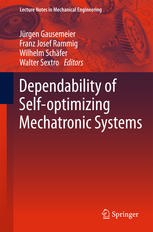

Most ebook files are in PDF format, so you can easily read them using various software such as Foxit Reader or directly on the Google Chrome browser.
Some ebook files are released by publishers in other formats such as .awz, .mobi, .epub, .fb2, etc. You may need to install specific software to read these formats on mobile/PC, such as Calibre.
Please read the tutorial at this link: https://ebookbell.com/faq
We offer FREE conversion to the popular formats you request; however, this may take some time. Therefore, right after payment, please email us, and we will try to provide the service as quickly as possible.
For some exceptional file formats or broken links (if any), please refrain from opening any disputes. Instead, email us first, and we will try to assist within a maximum of 6 hours.
EbookBell Team

0.0
0 reviewsIntelligent technical systems, which combine mechanical, electrical and software engineering with methods from control engineering and advanced mathematics, go far beyond the state of the art in mechatronics and open up fascinating perspectives. Among these systems are so-called self-optimizing systems, which are able to adapt their behavior autonomously and flexibly to changing operating conditions. The Collaborative Research Center 614 "Self-optimizing concepts and structures in mechanical engineering" pursued the long-term aim to enable others to develop dependable self-optimizing systems. Assuring their dependability poses new challenges. However, self-optimization also offers the possibility to adapt the system's behavior to improve dependability during operation.
The aim of this book is to provide methods and techniques to master the challenges and to exploit the possibilities given by self-optimization. The reader will be able to develop self-optimizing systems that fulfill and surpass today’s dependability requirements easily.
This book is directed to researchers and practitioners alike. It gives a brief introduction to the holistic development approach for self-optimizing mechatronic systems and the steps required to assure a dependable product design starting with the very early conceptual design phase. A guideline to select suitable methods for each step and the methods themselves are included. Each method is individually introduced, many examples and full references are given.